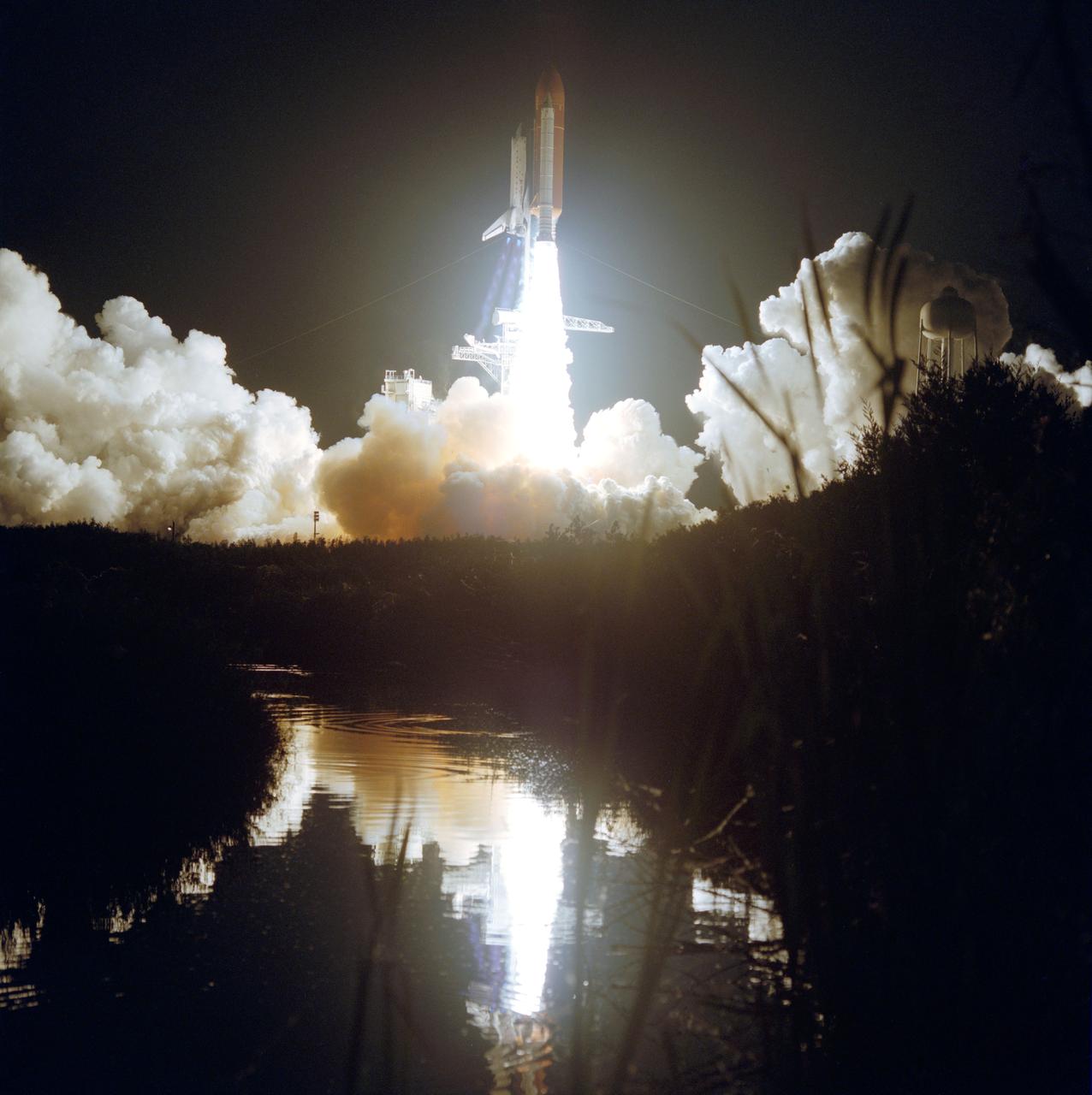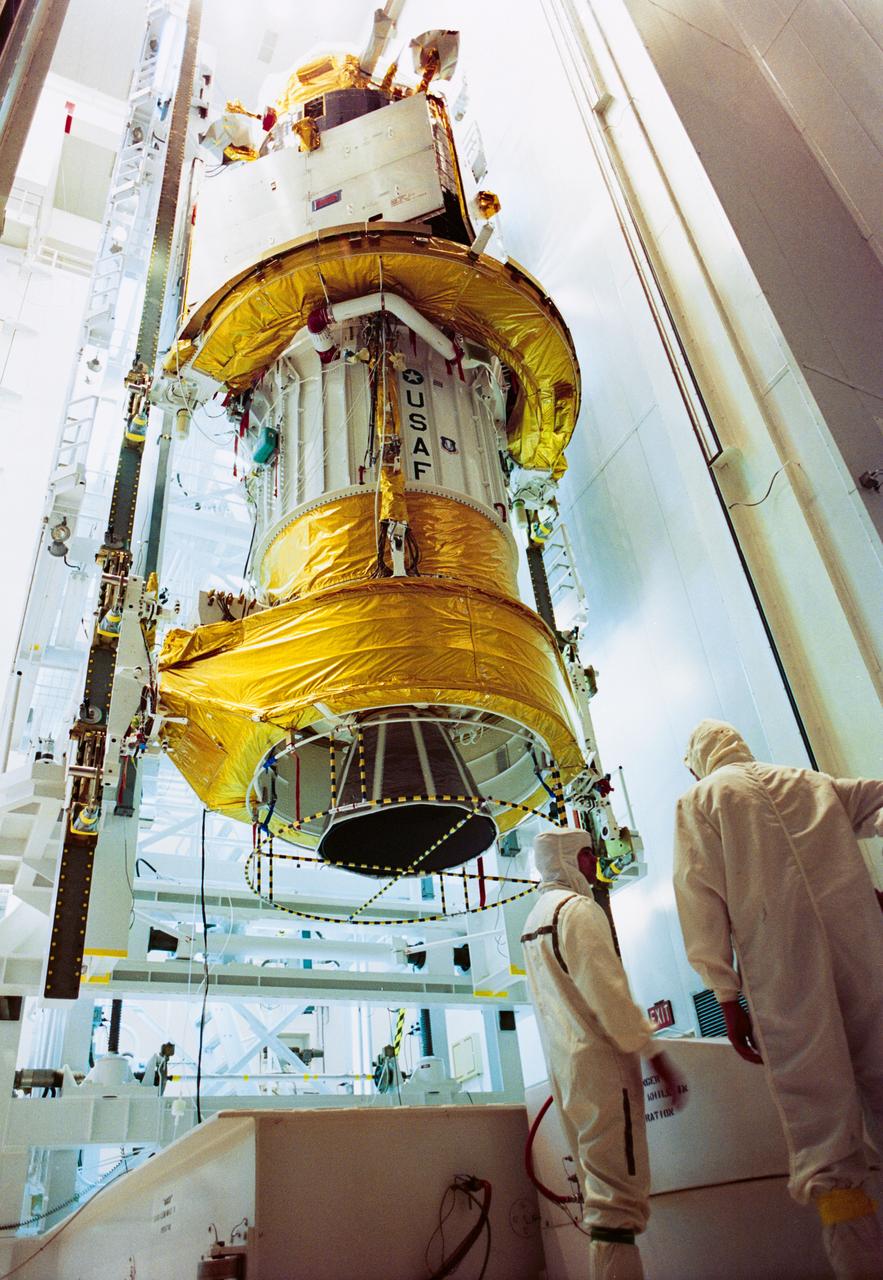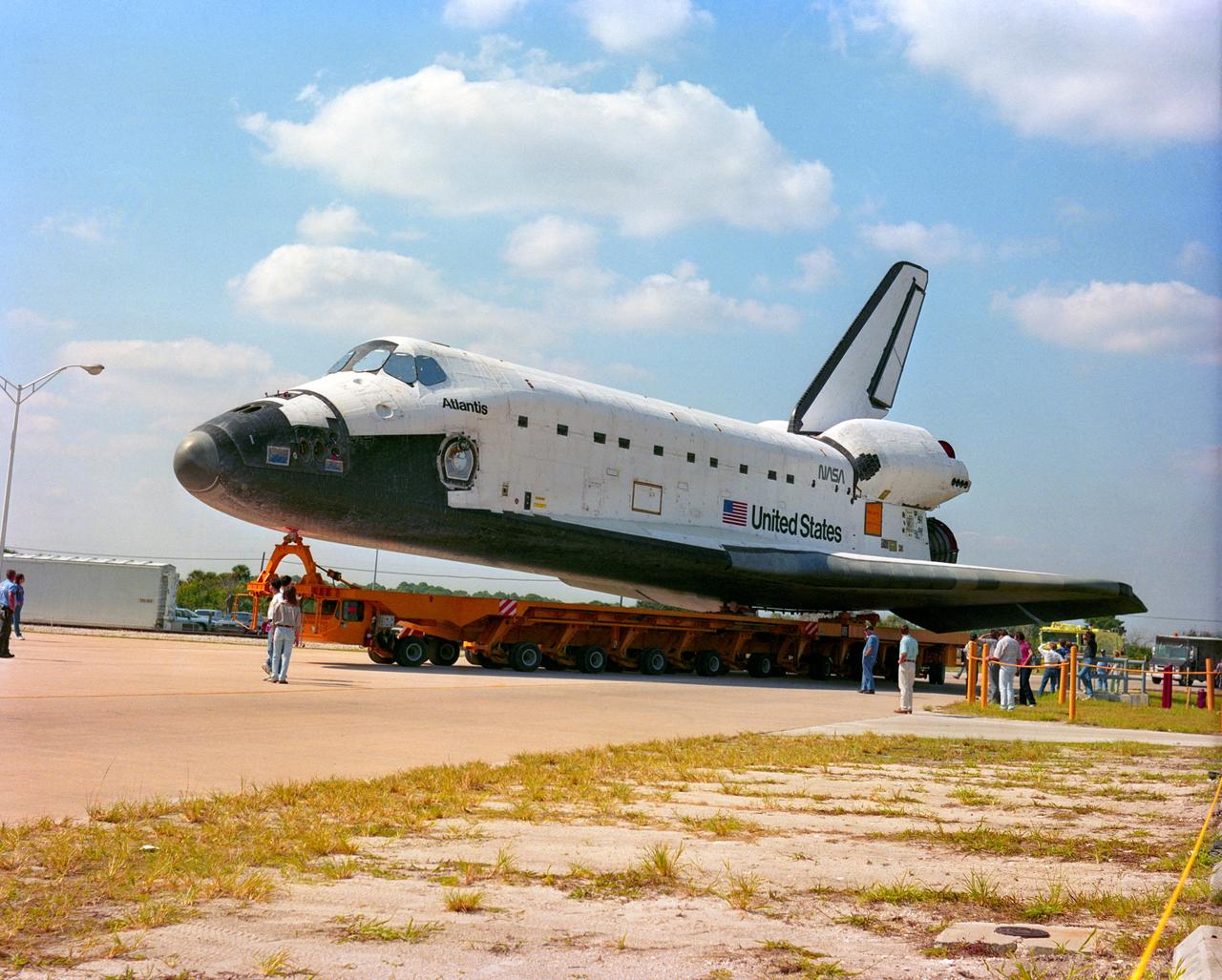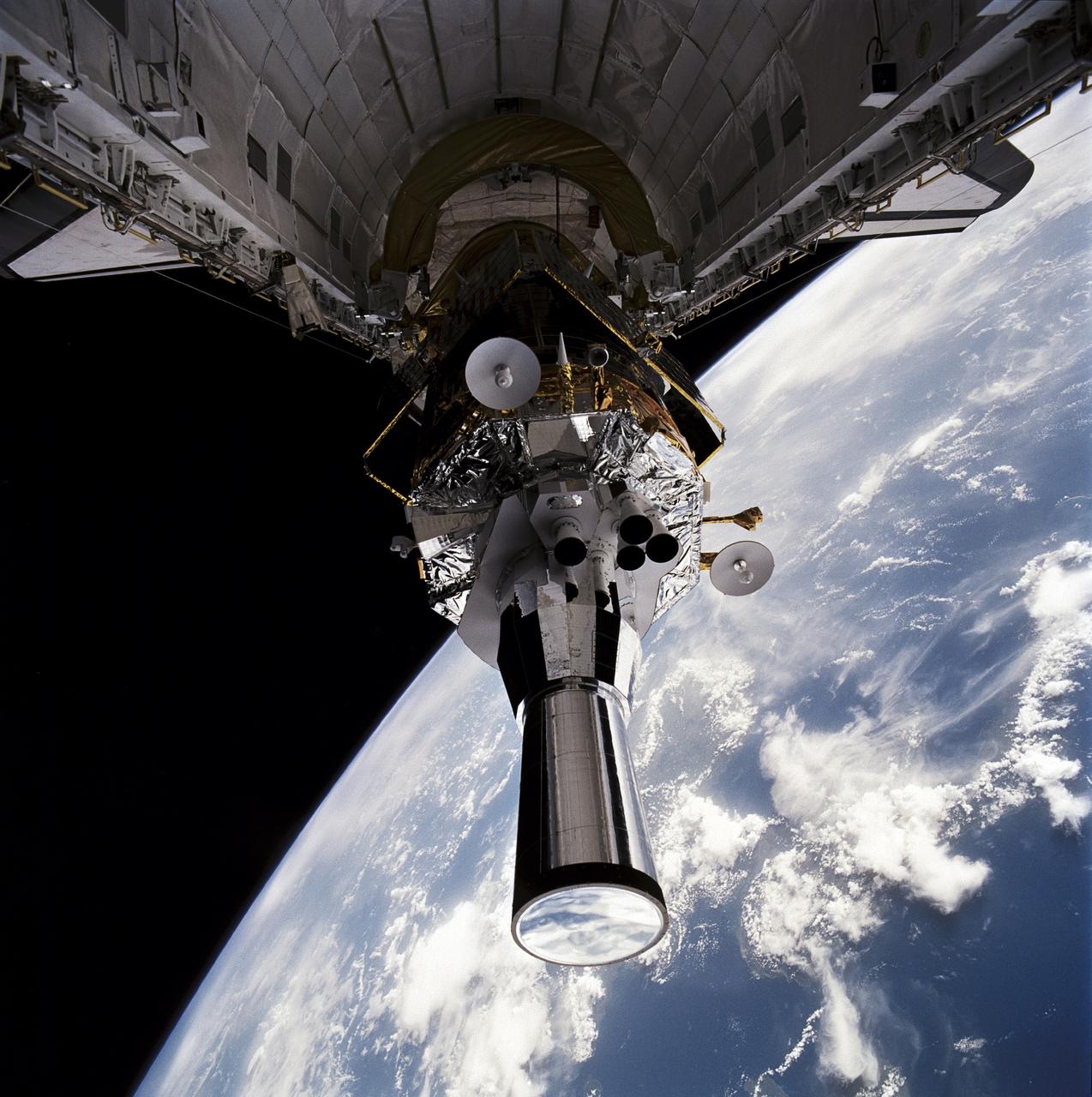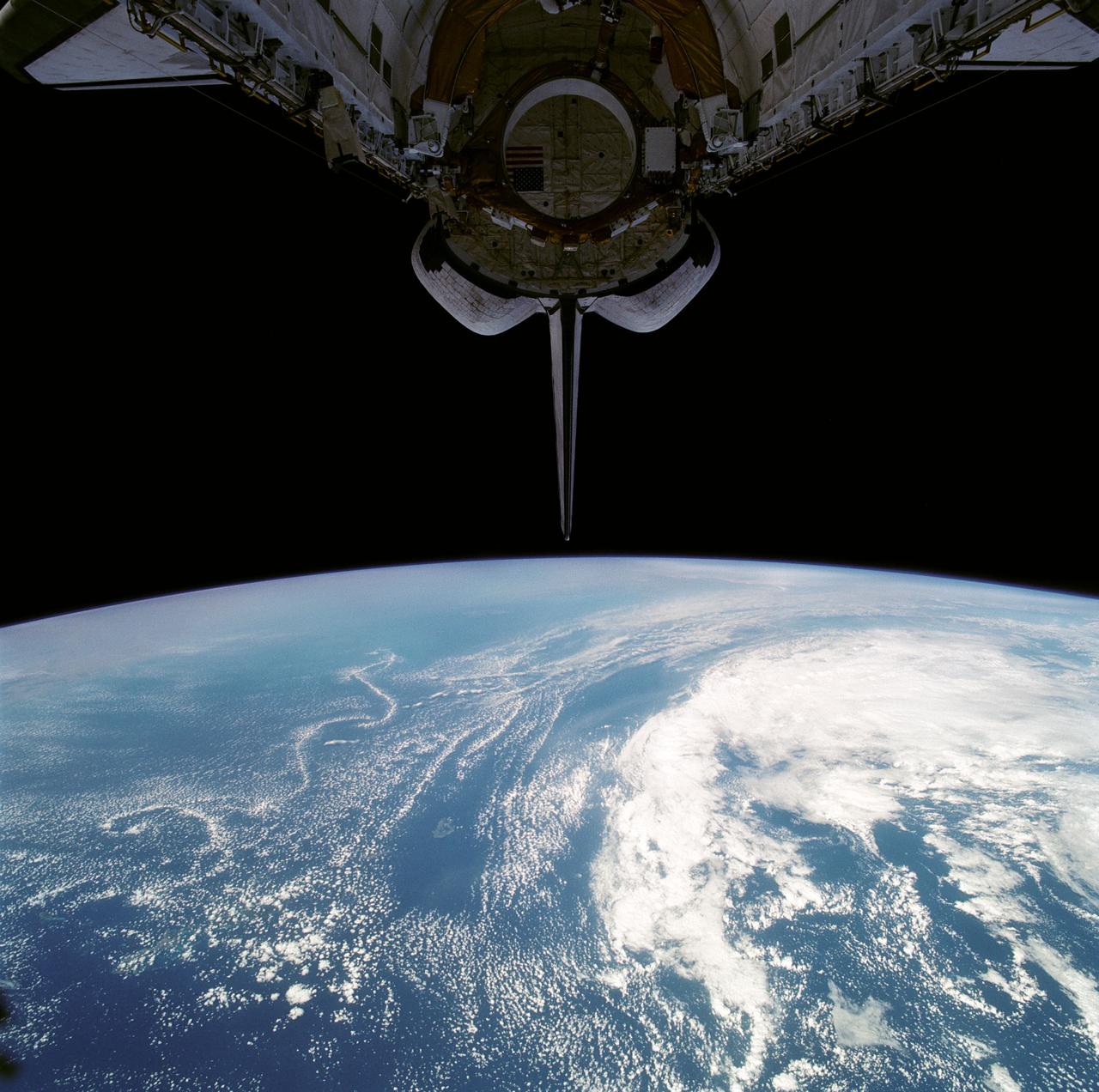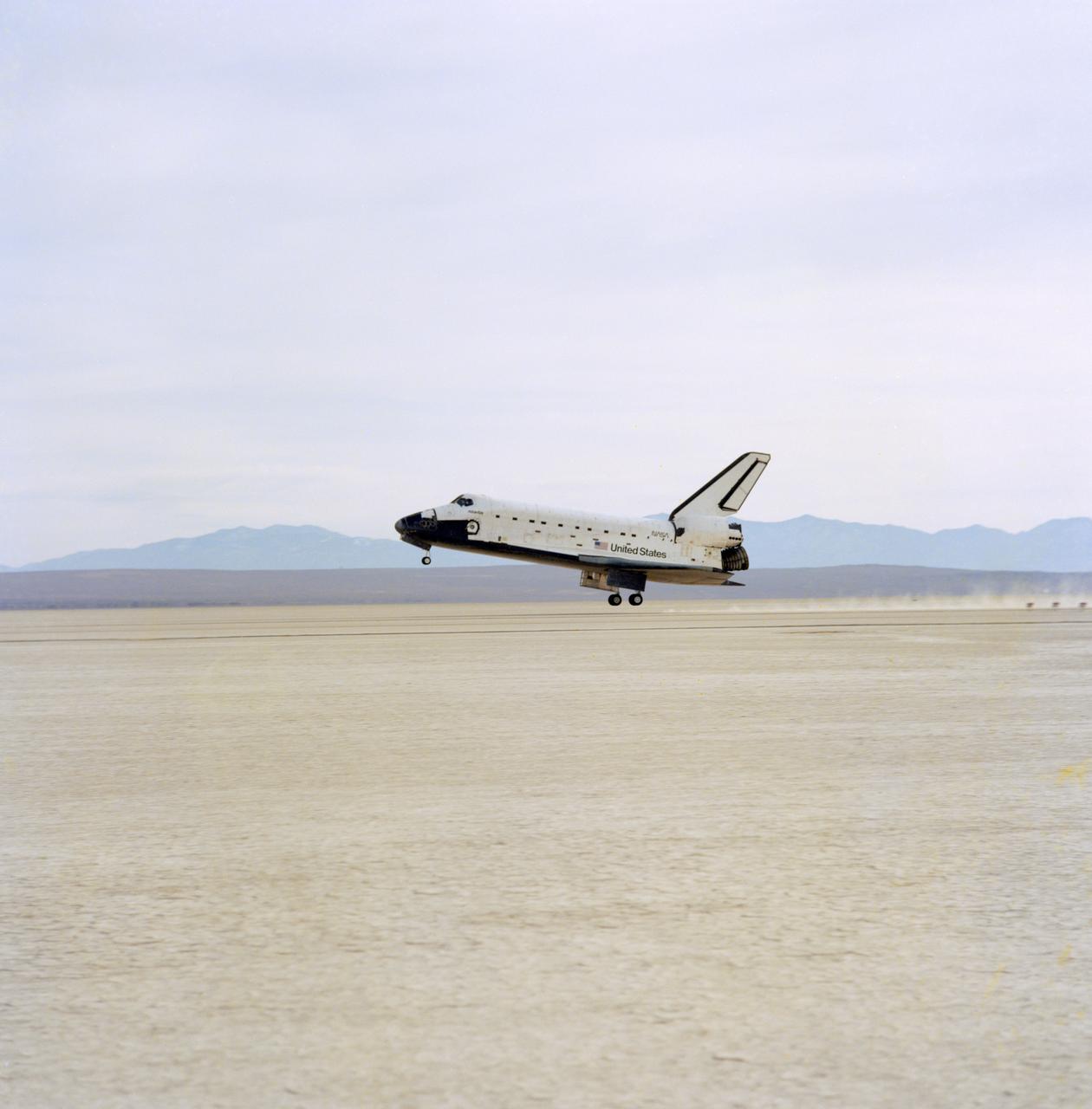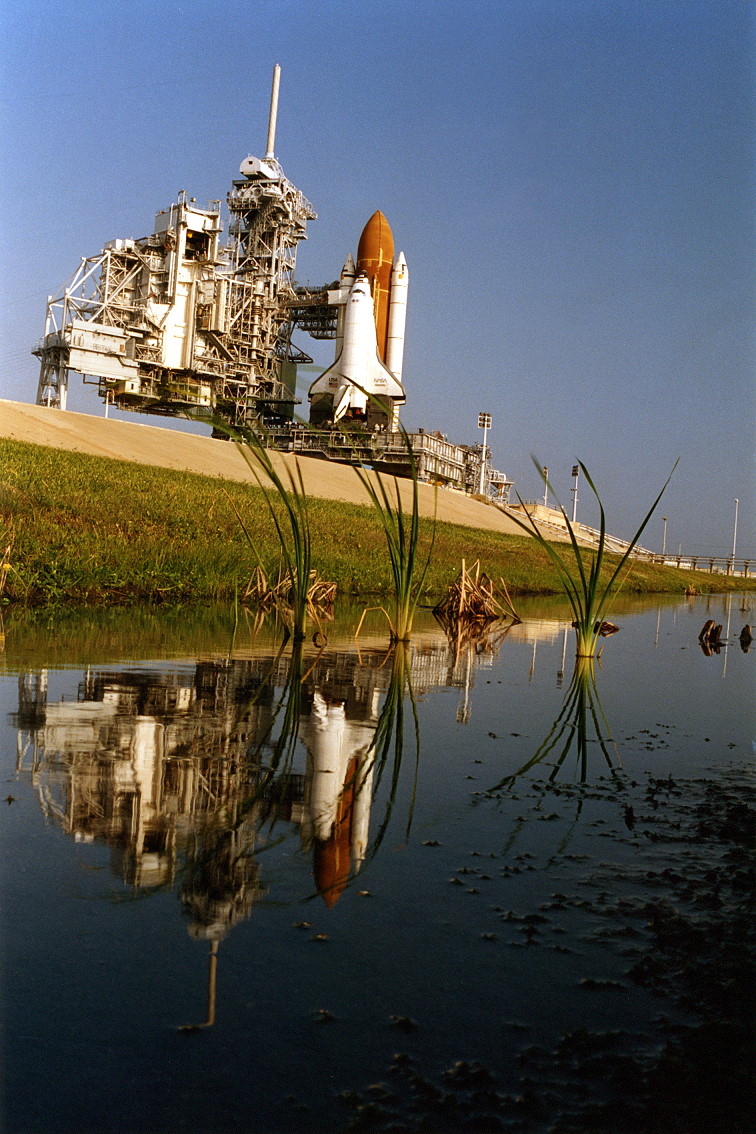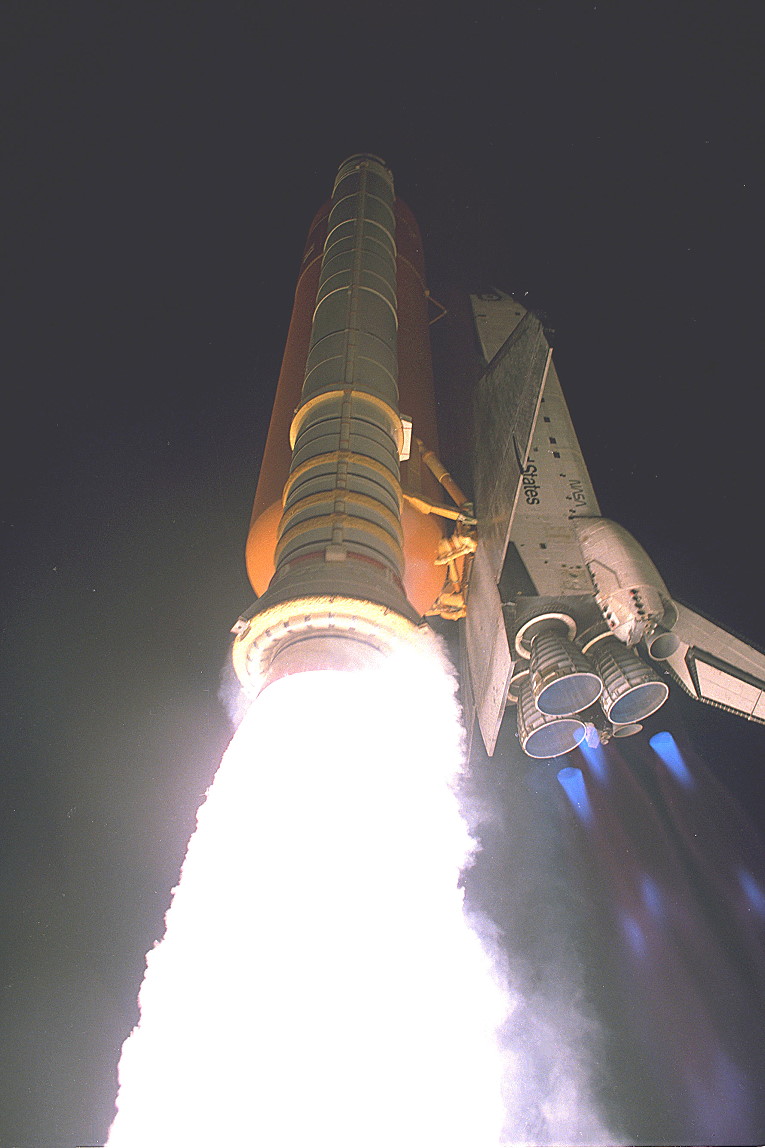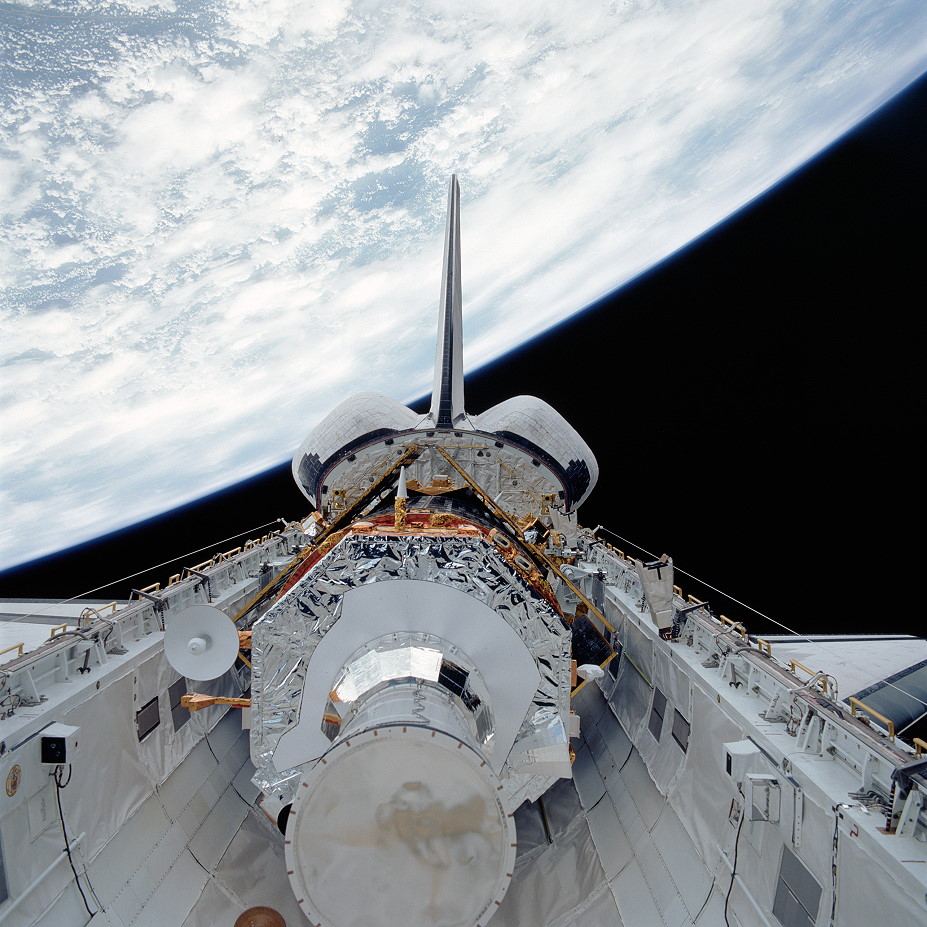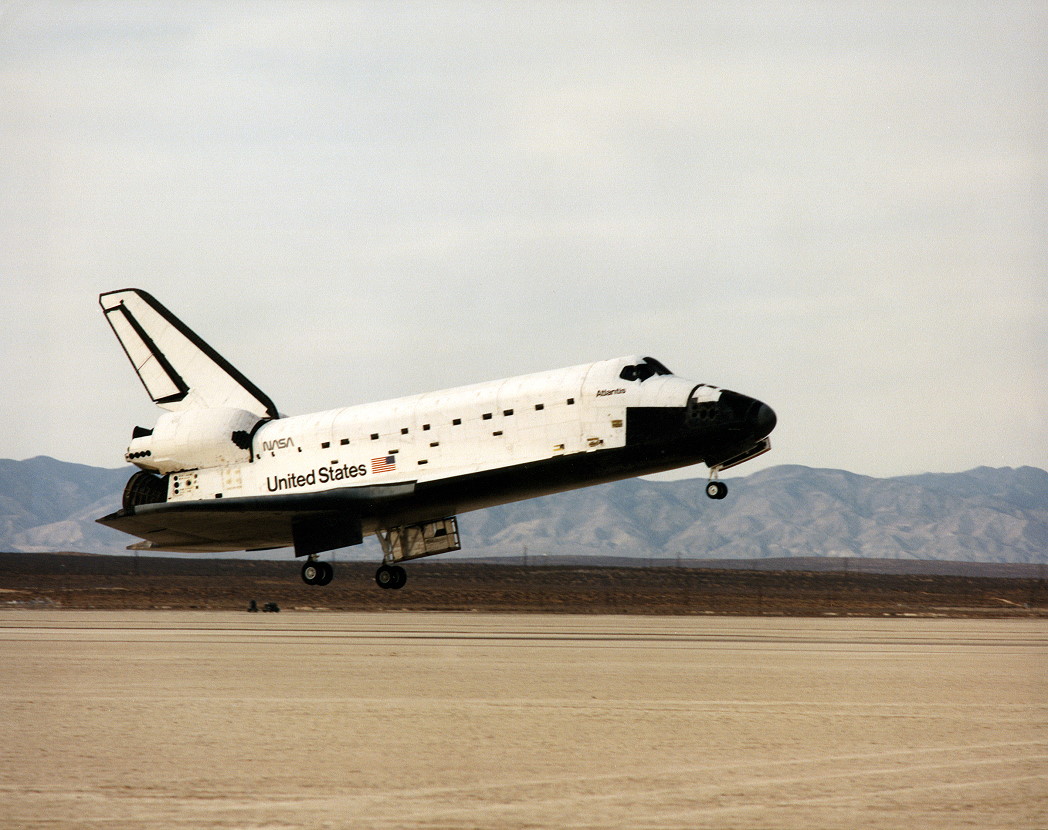STS-44 Fact Sheet
By Cliff Lethbridge

STS-44 — Atlantis
44th Space Shuttle Mission
10th Flight of Atlantis
Crew:
Frederick D. Gregory, Commander
Terence T. Henricks, Pilot
Mario Runco, Jr., Mission Specialist
James S. Voss, Mission Specialist
F. Story Musgrave, Mission Specialist
Thomas J. Hennen, Payload Specialist
Orbiter Preparations:
Tow to Orbiter Processing Facility – August 12, 1991
Rollover to Vehicle Assembly Building – October 18, 1991
Rollout to Launch Pad 39A – October 23, 1991
Launch:
November 24, 1991 – 6:44:00 p.m. EST. Launch was originally scheduled for November 19, 1991 but was postponed due to a faulty redundant inertial measurement unit on the Inertial Upper Stage (IUS) booster attached to the Defense Support Program (DSP) satellite. Unit was replaced.
November 24 launch was delayed 13 minutes to allow an orbiting spacecraft to pass out of the flight path and to allow external tank liquid oxygen replenishment after minor repairs were made to a valve in the liquid oxygen replenishment system in the mobile launcher platform.
Landing:
December 1, 1991 – 2:34:44 p.m. PST at Runway 5, Edwards Air Force Base, California. Rollout distance was 11,191 feet. Rollout time was 107 seconds. Mission duration was 6 days, 22 hours, 50 minutes, 44 seconds. Landing occurred during the 110th orbit.
Landing was originally planned for December 4, 1991 but the mission was shortened due to the in-flight failure of one of three Inertial Measurement Units (IMU).
Unusually long rollout distance and time were the result of limited braking for test purposes.
Mission Summary:
This was the ninth dedicated Department of Defense Mission in the Space Shuttle program. Unclassified payloads included the Defense Support Program (DSP) satellite, deployed using an Inertial Upper Stage (IUS) booster.
Unclassified experiments included the Interim Operational Contamination Monitor (IOCM), Terra Scout, Military Man In Space (M88-1), Air Force Maui Optical Site (AMOS) experiment, Cosmic Radiation Effects and Activation Monitor (CREAM), Shuttle Activation Monitor (SAM), Radiation Monitoring Equipment III (RME III), Visual Function Tester-1 (VFT-1), Ultraviolet Plume Instrument (UVPI),
Bioreactor Flow and Particle Trajectory experiment and Extended Duration Orbiter Medical Project.
SELECTED NASA PHOTOS FROM STS-44

